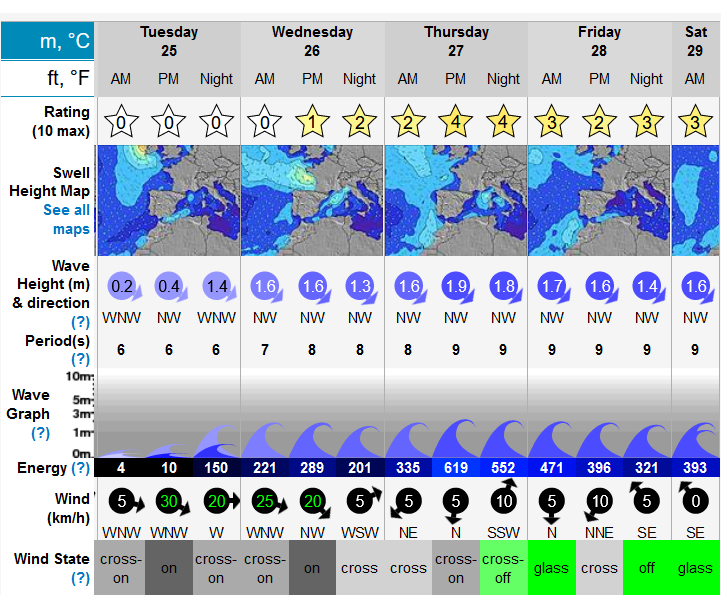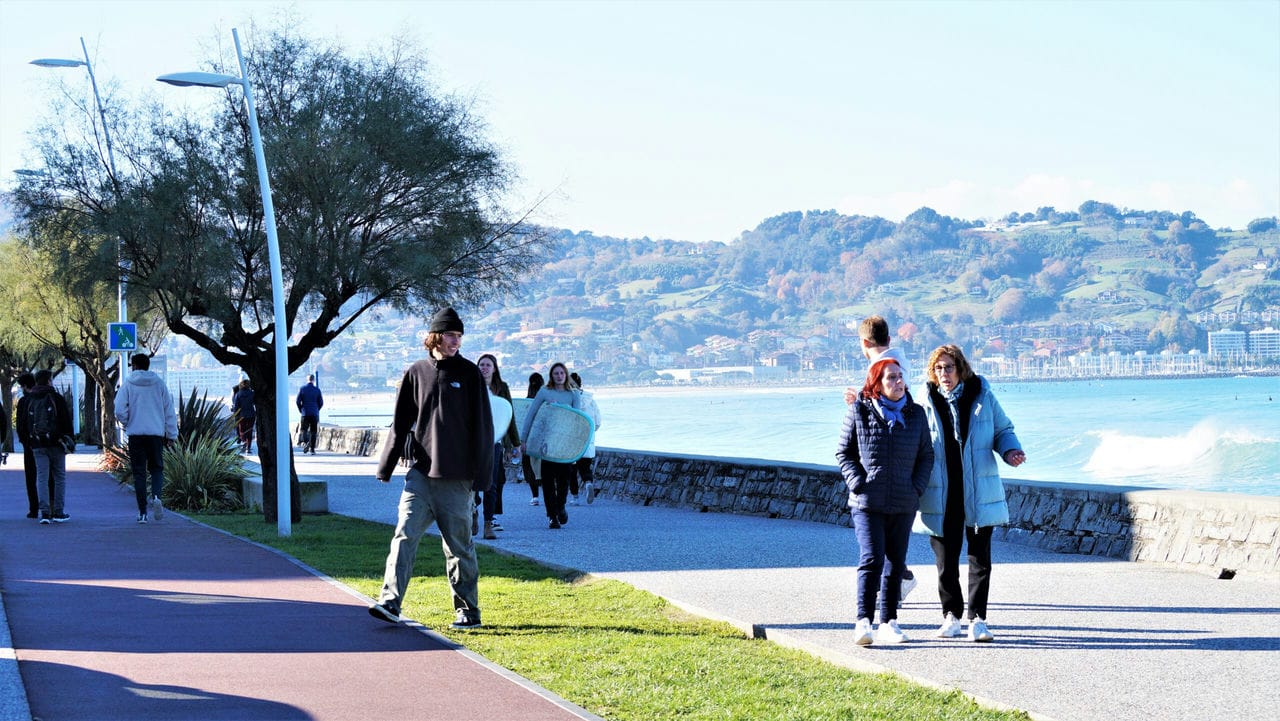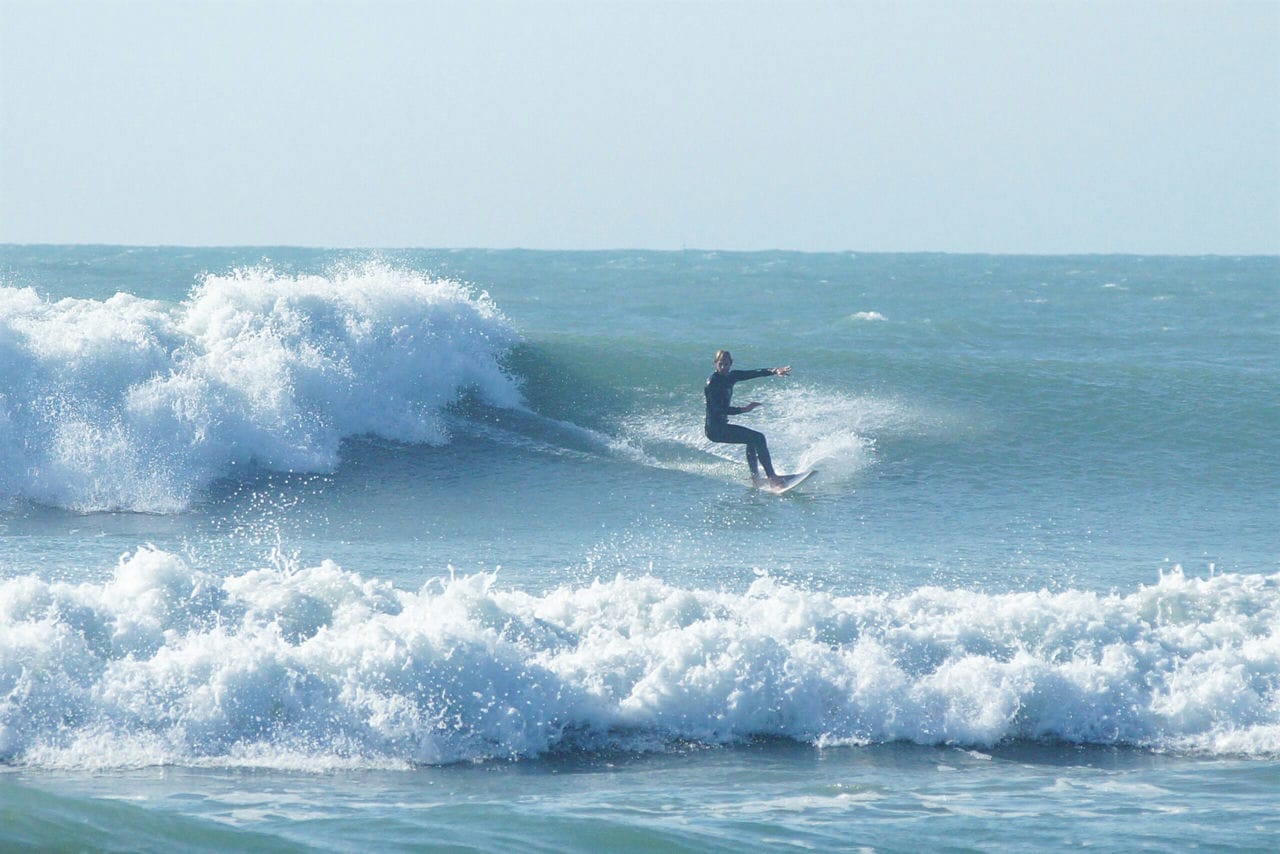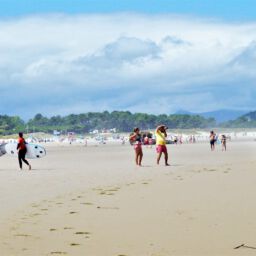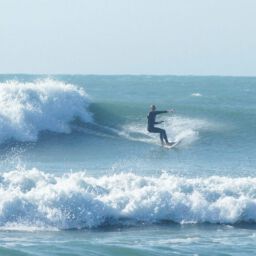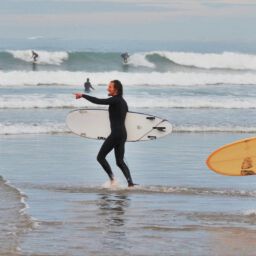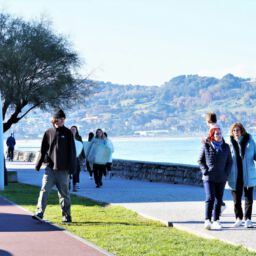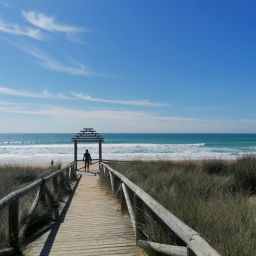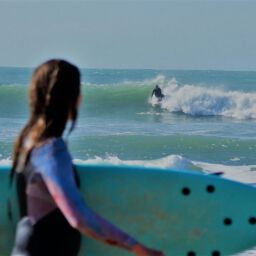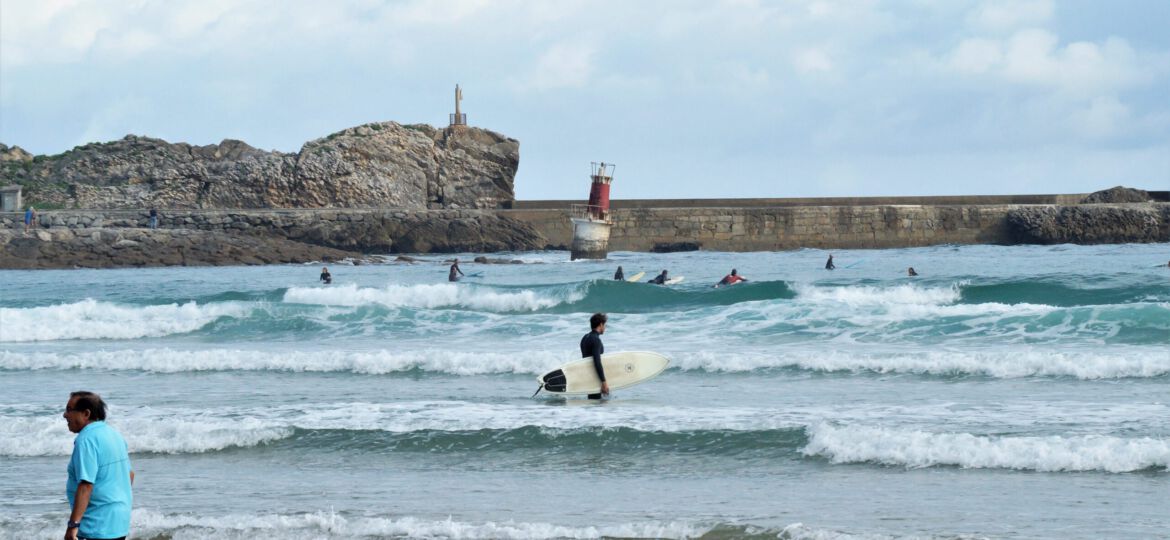
7 reasons to surf in Spain
We love surfing in Spain! Here are 7 reasons why we like it so much. For example, the waves, the food, and the culture. Wibisurf is currently located in the North of Spain, traveling, working, and always looking for the best waves… Because surfing in Spain offers a combination of favorable surf conditions, scenic coastlines, cultural experiences, and a welcoming community, making it an appealing destination for surfers from around the world. Read more and fall in love with Spain as well!
1. Many different Beaches and waves
Spain has a diverse coastline along the Atlantic Ocean and the Mediterranean Sea, providing a wide range of beaches suitable for surfing. From the northern region of Cantabria and Galicia to the southern coasts of Andalusia.
There are manny different breaks, beach breaks, point breaks and reef breaks, suitable for all levels of surfers. From mellow beach breaks like San Vicente and Somo to the powerful reef breaks, like Mundaka and El Brusco you can find a variety of wave setups along the Spanish coast. This allows surfers to progress their skills or find suitable waves for their preferred style of surfing.
The coastline provides a wide range of wave types and conditions. It’s always recommended to check local surf reports, consult with local surfers, and consider the specific characteristics of each spot before heading out to surf.
2. consistent Swell and different regions
Spain benefits from consistent swells in certain regions, particularly along its Atlantic coast. Here are some areas in Spain known for consistent surf:
Northern Atlantic Coast: The northern regions of Spain, including Cantabria, Asturias, and the Basque Country, receive consistent swells throughout the year. This is due to their exposure to the North Atlantic and favorable coastal geography. The consistent swells make these regions popular among surfers, offering various surf breaks suitable for different skill levels.
The province of Galicia, in the northwest corner of Spain, experiences consistent swells due to its exposure to the Atlantic Ocean. The region offers a rugged coastline with a mix of reef breaks, point breaks, and beach breaks. Although the water can be cooler compared to other regions, the consistency and quality of waves make Galicia a favorite among experienced surfers.
Costa de la Luz, he coastline of Andalusia located in Southwestern Spain along the Atlantic coast, benefits from consistent swells. The region offers a mix of beach breaks and point breaks, attracting surfers seeking quality waves. Spots such as Tarifa, Zahara de los Atunes, and El Palmar are known for their consistent surf and vibrant surf culture.
It’s important to note that while these regions experience consistent swells, wave conditions can vary throughout the year. Local knowledge, surf reports, and checking surf forecasts are essential for finding the most suitable waves during your visit.
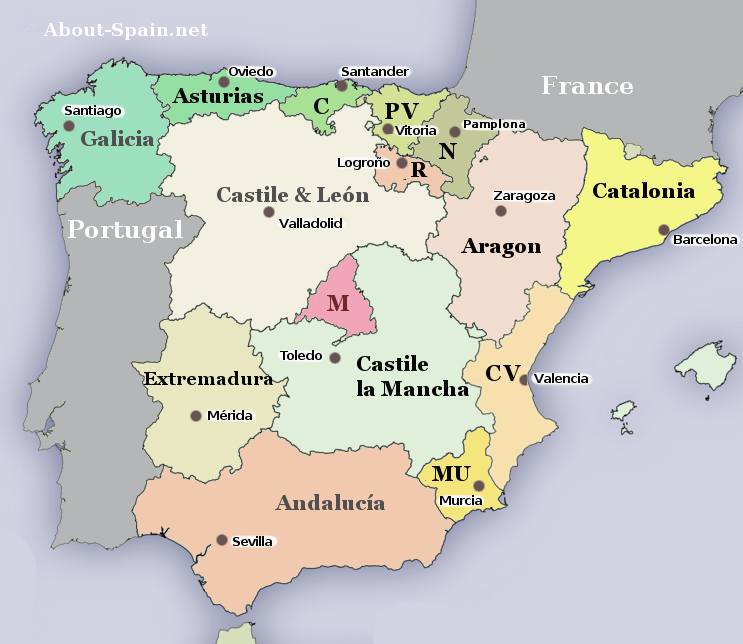
regions of spain
3. Surfing for all levels
Surfing in Spain caters to surfers of all levels, from beginners to advanced riders. Here are the different levels typically recognized within the Spanish surfing community:Beginner Level: Surfing schools and camps across Spain offer programs specifically designed for beginners. These lessons focus on basic techniques, such as paddling, pop-up (standing up on the board), and catching small, mellow waves in a safe and controlled environment. Beginners often start with soft-top or longboard surfboards, which provide stability and buoyancy for learning.
Intermediate Level: Intermediate surfers have progressed beyond the beginner stage and are comfortable riding smaller, unbroken waves. They have developed a good sense of balance and are capable of executing basic maneuvers, such as bottom turns and cutbacks. Intermediate surfers continue to refine their skills and learn more advanced techniques to handle larger waves and more challenging conditions.
Advanced Level: Advanced surfers in Spain possess a high level of skill, experience, and wave knowledge. They can confidently handle a wide range of conditions, including larger waves, reef breaks, and powerful beach breaks. Advanced surfers have mastered maneuvers such as top turns, off-the-lip maneuvers, and tube riding. They often ride shorter, more maneuverable boards that allow for increased performance on the waves.
Whether you’re a beginner seeking to learn the basics, an intermediate surfer looking to progress, or an advanced rider searching for challenging waves, Spain offers a variety of surf breaks and coaching options to accommodate surfers at different levels.
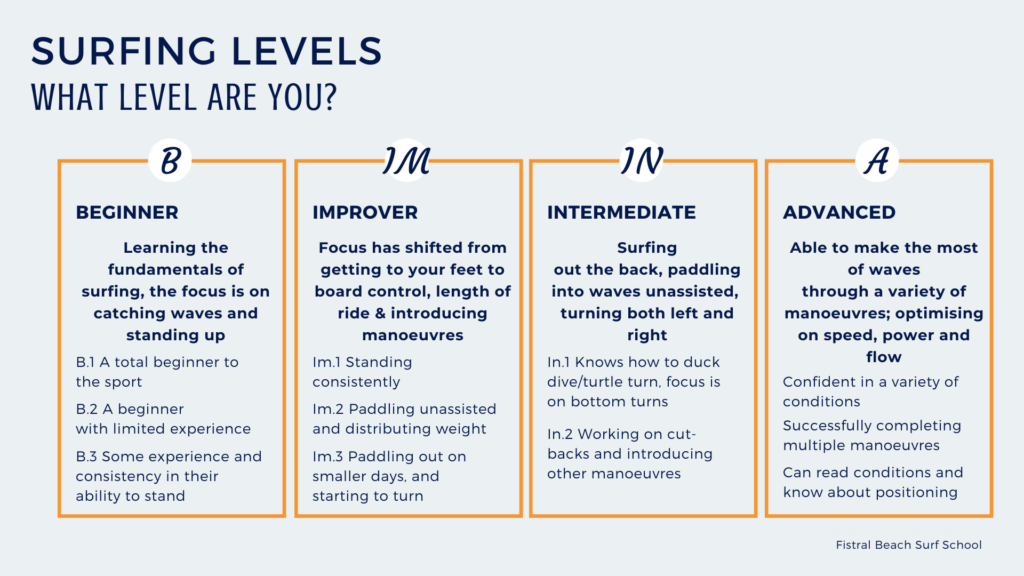
4. Easy Traveling
Spain is located in southwestern Europe and has a vast coastline along the Atlantic Ocean and the Mediterranean Sea. Its strategic position makes it easily accessible for surfers from various parts of Europe and other international destinations, with numerous international airports located in major cities and coastal areas. Cities like Barcelona, Madrid, Malaga, Bilbao, and Las Palmas have airports with regular flights connecting them to major cities around the world. This makes it convenient for surfers to fly directly into Spain. The infrastructure in Spain is great; the highways, trains, and buses allow surfers to easily navigate within the country and reach different surf spots along the coastline.
Spain has a well-established surfing infrastructure. You’ll find surf schools, camps, shops, and rental services along the coast. Both for beginners and experienced surfers, providing equipment, lessons, and local knowledge. The presence of this infrastructure makes it easier for surfers to access necessary resources and services.
Spain is a popular tourist destination known for its warm hospitality, cultural attractions, and diverse landscapes. Many coastal towns and cities along the Spanish coast are well-equipped to welcome visitors, providing a range of accommodations, dining options, and entertainment. This tourist-friendly environment adds to the appeal of surfing in Spain, as surfers can enjoy not just the waves but also the overall experience of the country.
5. The food, Culture and Lifestyle
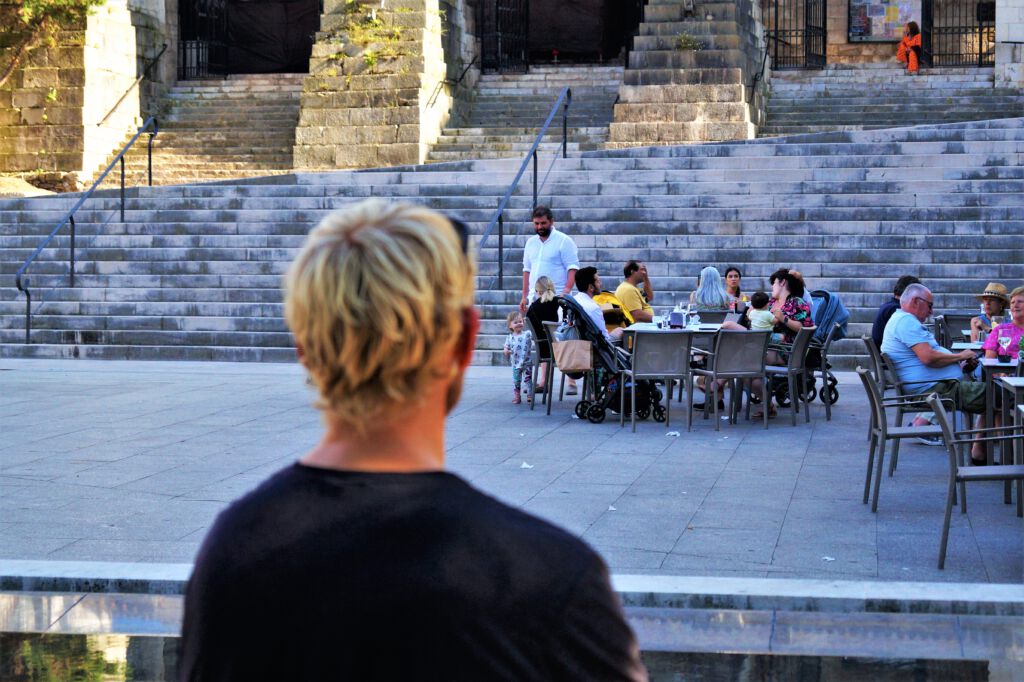
Spain is known for its vibrant culture, delicious cuisine, and warm hospitality. Surfing in Spain allows you to immerse yourself in the local lifestyle, enjoying the renowned Spanish cuisine, exploring charming coastal towns, and experiencing the energetic atmosphere both in and out of the water.
The Spanish cuisine is renowned worldwide for its delicious flavors and variety. Tapas, small plates of savory bites, are a beloved part of the culinary culture, encouraging socializing and sharing. Spain is known for dishes like paella, tortilla de Patatas (Spanish omelet), jamón ibérico (Iberian ham), and an abundance of fresh seafood. Each region has its own specialties and local ingredients, making it a gastronomic paradise.
The siesta, a midday break or nap, has been a traditional part of Spanish culture. While the siesta may not be as prevalent as it once was, especially in urban areas, the concept of taking time to relax and enjoy leisure is still valued. Spaniards often embrace a more relaxed pace of life, prioritizing quality time with family and friends, enjoying long meals, and savoring the moment.
Spain is famous for its vibrant festivals and celebrations that showcase the country’s rich cultural heritage. From the running of the bulls during the San Fermín festival in Pamplona to the lively La Tomatina tomato fight in Buñol, there are numerous unique and exciting events throughout the year. .Flamenco, a passionate and soulful music and dance form, is an integral part of Spanish culture. Originating from Andalusia, it expresses deep emotions through intricate guitar melodies, powerful vocals, and expressive dance movements. Spanish music encompasses various genres, from traditional folk music to modern pop and rock.
With its pleasant climate and diverse natural landscapes, Spain encourages an outdoor lifestyle.The people from Spain enjoy spending time outdoors, whether it’s strolling along the beach promenades, hiking in the mountains, or relaxing in city parks. Sports like football (soccer), basketball, tennis, and cycling are also popular.
6. The Surf Community
The surfing community in Spain is known for being inclusive and welcoming to surfers of all levels and backgrounds. Whether you’re a beginner just starting or an experienced surfer. You’ll find a supportive environment where people are passionate about the sport and eager to share their knowledge and experiences. The thriving surfing community has numerous surf schools, clubs, and events throughout the year. This sense of community creates a welcoming environment for surfers of all levels, whether you’re a beginner looking to take lessons or an experienced surfer seeking like-minded individuals to share the stoke with. Plenty of surf schools and camps offer surf lessons, coaching, and surf camps for surfers of all ages and skill levels. They provide an excellent opportunity for beginners to learn the fundamentals and for more advanced surfers to improve their skills.
Spain hosts various surfing competitions and events throughout the year, showcasing the talent and passion within the community. From local fun contests to professional events, there are opportunities for surfers to compete and demonstrate their skills. These events unite the community and provide a platform for surfers to connect and celebrate their shared love for the sport. Surfing associations and clubs are important in fostering the surfing community in Spain. They organize activities, promote the sport, and advocate for protecting the ocean and coastal environments. Joining a surf club or association is a great way to meet like-minded individuals, participate in group activities, and contribute to the community.
Surfing is not just a sport but also a way of life for many in the Spanish surfing community. The laid-back and outdoor-oriented lifestyle is embraced by surfers, who enjoy the connection with nature, the thrill of riding waves, and the camaraderie within the community. Surfing culture in Spain often involves socializing, sharing meals, attending events, and immersing oneself in the coastal lifestyle.
As with any surfing community, localism exists in certain spots in Spain. Some surf breaks may have a more localized and tight-knit group of surfers who prioritize respect, wave etiquette, and protecting their home breaks. Visitors must be aware of and respect the local customs and rules at each surf spot.
7. Surfing Year-Round
Thanks to its diverse coastline and varied wave conditions, you can surf in Spain throughout the year. Whether you’re planning a summer holiday or a winter getaway, you can find suitable surf conditions in Spain. Wibi Surf is staying in North Spain in Cantabria during the summer and moving to Andalucía (El Palmar) in the winter, Because of the waves and the weather. The surf conditions and best surf spots can vary depending on the season and region. Here’s an overview of surfing in Spain throughout the year:
Summer (June to August): Summer brings smaller swells to most parts of Spain, especially along the northern Atlantic coast. However, this is an ideal time for beginner and intermediate surfers to enjoy mellow waves and warm water temperatures. Popular surf destinations during summer include regions like Asturias, Cantabria, and the Basque Country, as well as the Canary Islands, which have consistent surf year-round.
Autumn (September to November): Autumn is considered a prime season for surfing in Spain. The North Atlantic starts producing larger swells again, and the surf conditions become more consistent. The northern regions of Spain, including Galicia, Asturias, and the Basque Country, receive powerful and consistent waves, attracting surfers looking for more challenging surf. The Southern coastline profits from the bigger swell. Places like El Palmar and Cadiz are famous for the sun and waves during the wintertime.
Winter (December to February)
Winter brings bigger swells and more consistent surf to many parts of Spain’s Atlantic coast, particularly in Cantabria, Asturias, and the Basque Country. These areas receive powerful waves generated by North Atlantic storms, making them popular destinations for experienced surfers seeking challenging conditions.
Spring (March to May): Spring is a transition period with varying conditions. Early spring can still see larger swells while the weather becomes milder and more comfortable. As the season progresses, the waves become more suitable for surfers of different skill levels. Regions like Galicia, Cantabria, and the Mediterranean coast begin to offer more manageable waves for beginners and intermediates.
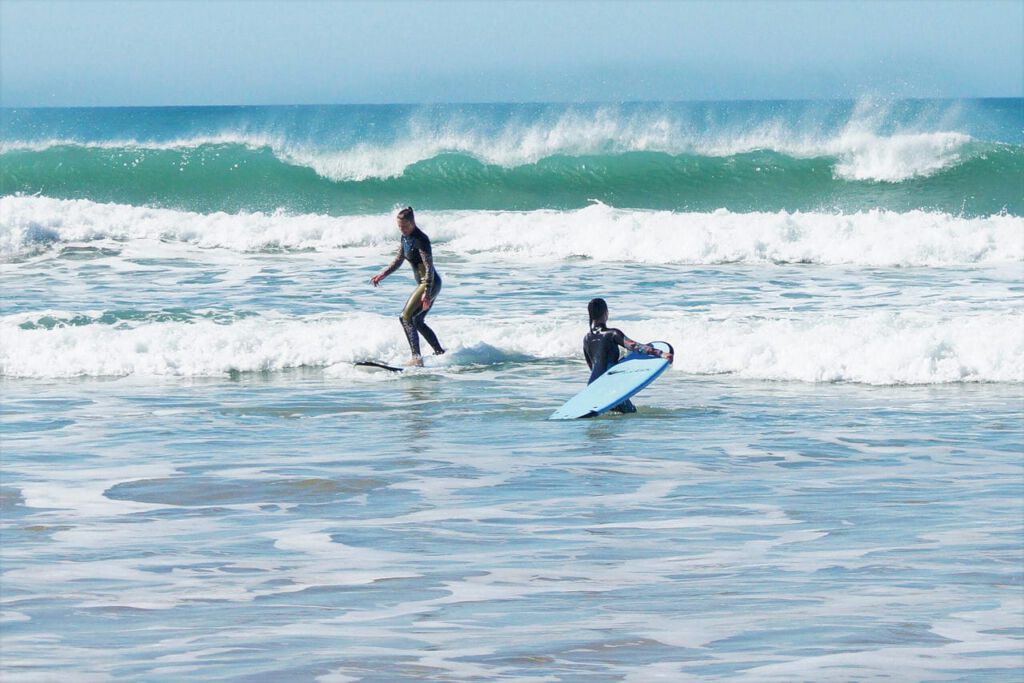
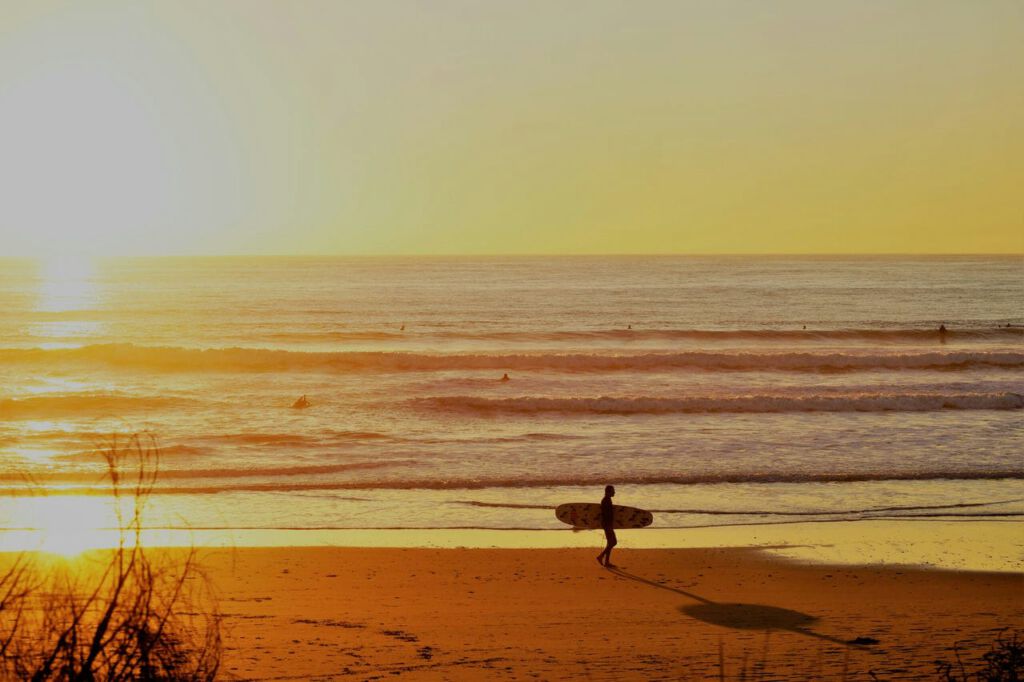
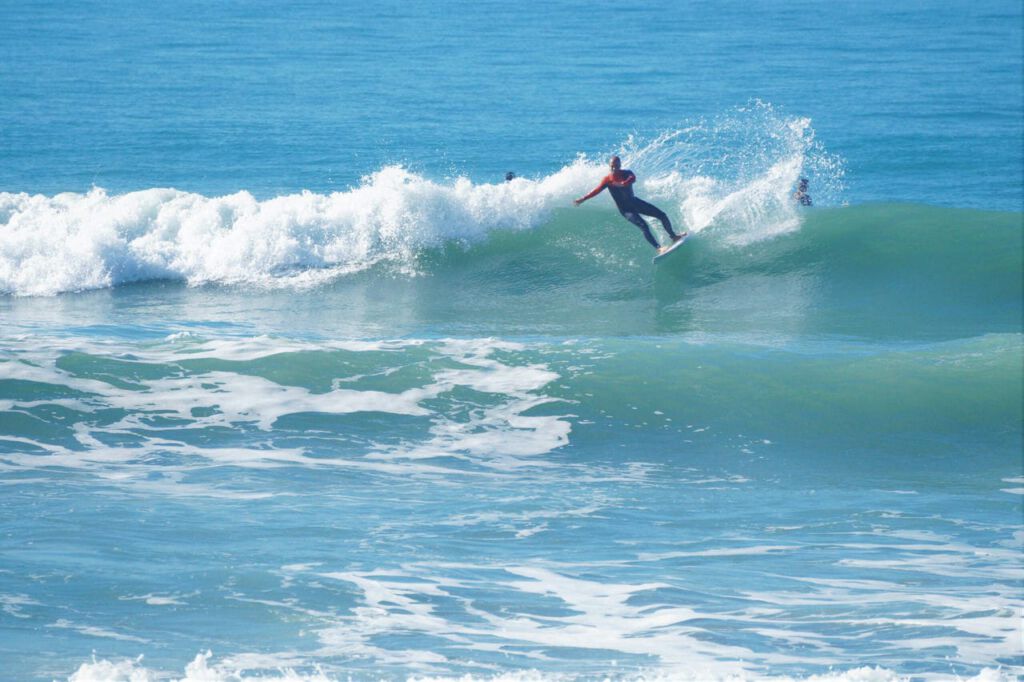
Surf with me in Spain
Surf coaching for beginner and intermediate surfers, in San Vicente de la Barquera: North of Spain; Cantabria Wibi Surf is passionate about surfing. We love to share our knowledge and get you hooked on surfing! Wibi works as an ISA-licensed surf instructor. With 10 years of experience in surfing. Wibi has taught and coached in Holland, NZ, Portugal, Spain, and France.
How do you like to surf in the sun, with blue water and nice waves? Wibi Surf is organizing a surfcamp in the North of Spain. During the surfcamp we will enjoy the waves, the beach, sakting, personal surftraining, videocoaching and other surf related activities. You can see the surf camp as a training camp what will help you in the future. With all kind of tools and hints to improve your surfing.
